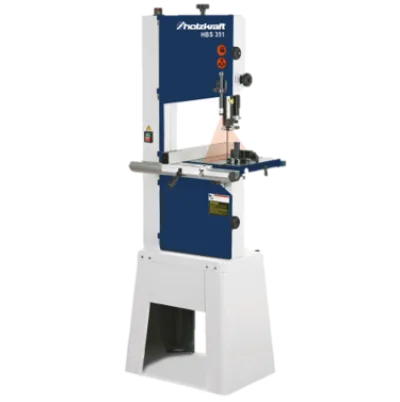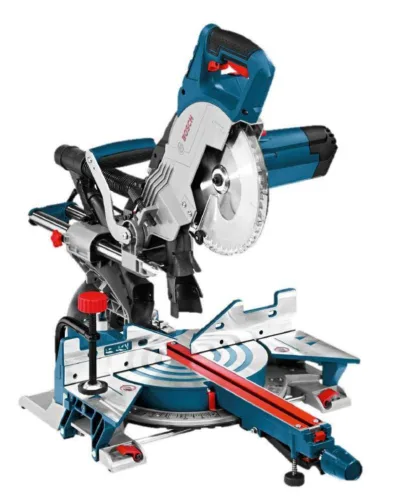Discover all scheduled Machine Introductions
Tools & Machines
Here’s a list of the tools, machines and materials available in the Makerspace & Lab. All ETH students are free to use the machines and only pay for the material.
Not sure about which tool to use or how to use it? Contact us and we can advise you on your project or put you in contact with an expert. If you visit us during the Support Hours, our Makerspace Instructors will be around to help you with your questions.
NOTE:
To use an advanced machine, you’ll need a Machine Introduction before getting started. Check out the individual machines for more information.
Use of the Life Science Lab and all machines therein requires project onboarding and a general lab safety introduction.
Hönggerberg:
0 of 24 availableZentrum:
0 of 24 available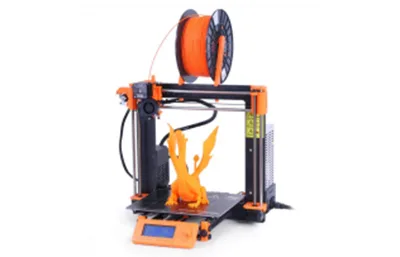
Prusa I3 Mk3S/Mk4S Filament Printer
- Fused Deposition Modeling (FDM)
- Volume 250 x 210 x 200 mm
- Nozzle 0.4 mm
- Minimum Layer Height 0.05 mm
- Materials: only PLA and PET.
- No personal spools allowed.
- Other materials available only for SPH registered projects.
- Material costs: PET is 0.06 CHF/g, PLA is 0.05 CHF/g.
30 min introduction required! Book a slot here.
Manual: Prusa FDM 3D Printer
Hönggerberg:
0 of 1 availableZentrum:
0 of 1 available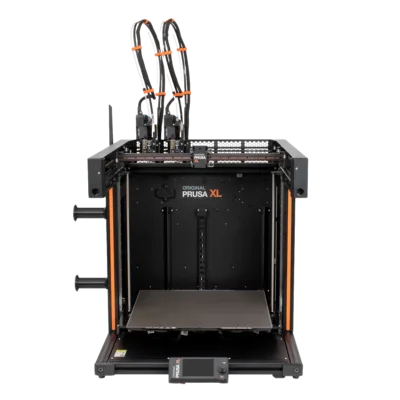
Prusa XL Filament Printer
- Fused Deposition Modeling (FDM)
- Volume 360 x 360 x 360 mm
- Nozzle 0.4 mm
- Minimum Layer Height 0.05 mm
- Materials: only PLA and PET.
- No personal spools allowed.
- Other materials available only for SPH registered projects.
- Material costs: PET is 0.06 CHF/g, PLA is 0.05 CHF/g.
Prerequisites:
3D Printer FDM introduction + 15 min introduction required, please ask a Makerspace Instructor during a Support Hour.
Manual: Prusa FDM XL 3D Printer
Hönggerberg:
0 of 2 availableZentrum:
0 of 3 available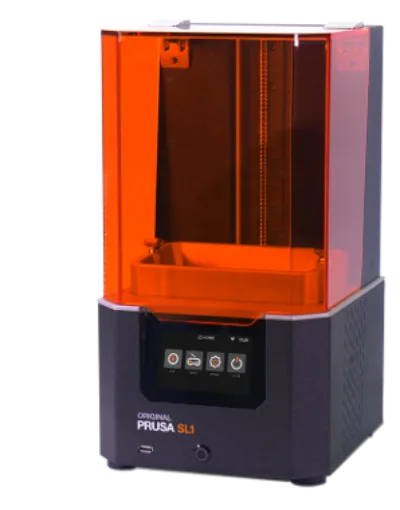
Prusa SL1/SL1S
- Direct Light Printing (DLP)
- Volume 120 x 68 x 150 mm
- Layer Height: 0.025 - 0.1 mm
- Material 405nm Resin in different colors.
- 2 CHF Base fee and 0.15 CHF/g Print cost
30 min introduction required! Book a slot here.
Manual: Prusa SL1 DLP
Hönggerberg:
0 of 2 availableZentrum:
0 of 4 available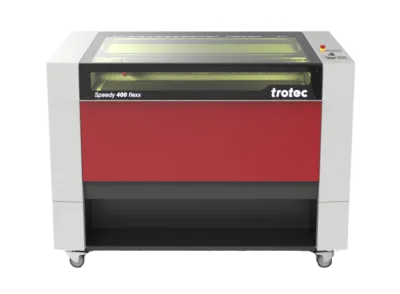
Trotec Speedy 400
- 100 W CO2 Lasercutter
- Table Size 1016 x 610 mm
- Engraving and cutting up to 7 mm
- Material MDF, Plywood, Acrylic (bought at the SPH)
30 min introduction required! Book a slot here.
Manual: Lasercutter
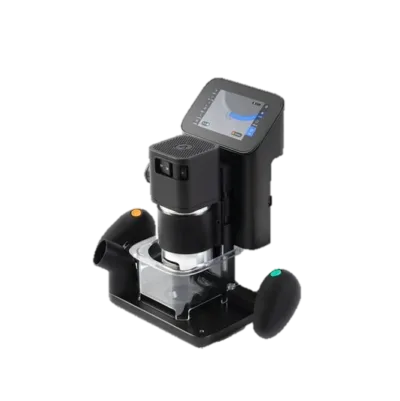
Shaper Origin
Cut and engrave wood, foam or plastics with basically free workpiece size.
Currently not available, we are working on a new safety concept for the Introduction.
Manual: Shaper Origin
Zentrum:
0 of 1 available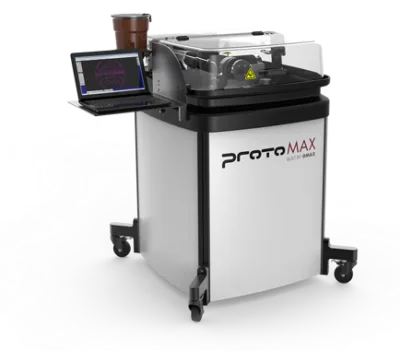
Metal Studio: Protomax
- Work area 300 x 300 mm
- Max thickness 25 mm
- Materials Metal, Carbon Fiber, Plastic, etc.
Currently not available, we are working on a new safety concept for the Introduction.
Manual: Waterjet Cutter
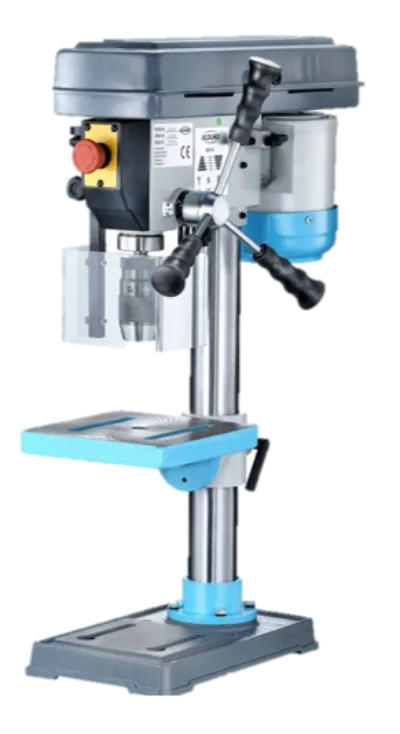
Wood Studio at SPH Hönggerberg: Alduro BM-14
- up to Ø 16 mm drilling in steel
- 490 - 2510 rpm
Included in the Wood Studio Introduction (60 minutes). Book a slot here.
Manual: Drillpress Zentrum
Zentrum:
0 of 1 available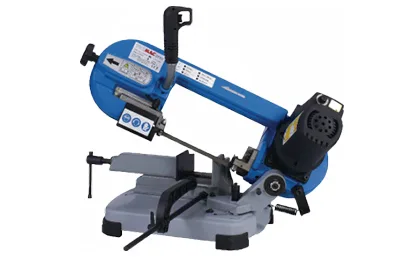
Metal Studio: Promac Metal band saw
- For cutting all kinds of metal
- Max piece size 125 x 125 mm
- Including a stop for repeated cuts
Currently not available, we are working on a new safety concept for the Introduction.
Manual: Metal Bandsaw
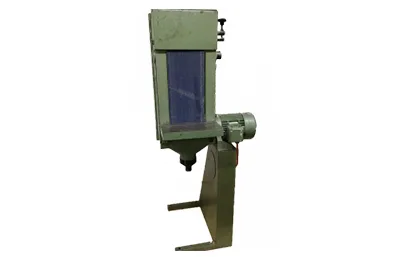
Wood Studio at SPH Hönggerberg: Holzkraft BTS 200
- Big belt sander for sanding down wood
Included in the Wood Studio Introduction (60 minutes). Book a slot here.
Manual: Belt Sander
Hönggerberg:
0 of 1 available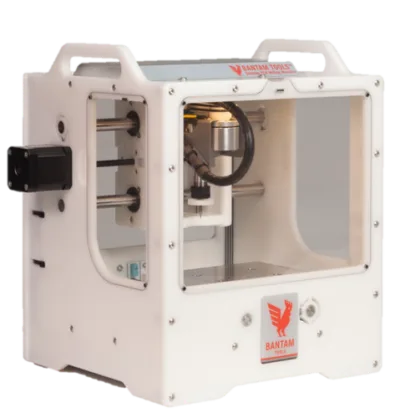
Hönggerberg: Bantam PCB Mill
- Work Area 139.7 x 114.3 x 40.64 mm
- Single or couble sided PCBs (bought at SPH)
Design and test your protoype PCB right here at the Makerspace
Ask a Makerspace Instructor during a Support Hour for a 30 min introduction.
Manual: PCB Mill
Hönggerberg:
0 of 1 available
Zentrum & Hönggerberg: ZB2520HL
- For SMD soldering
Ask a Makerspace Instructor during a Support Hour if you have questions how to use it.
Manual: Reflow Oven
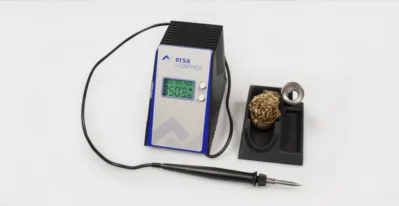
Ersa soldering station with the necessary consumables is available for building electronic circuits. The consumables include cables, desoldering wick, heat-shrink tubing and more. All of those are for free. In addition the Makerspace is equipped with an oscilloscope, a signal generator and lab power supplies.
Ask a Makerspace Instructor during a Support Hour if you have questions how to use it.
Hönggerberg:
0 of 1 availableZentrum:
0 of 1 available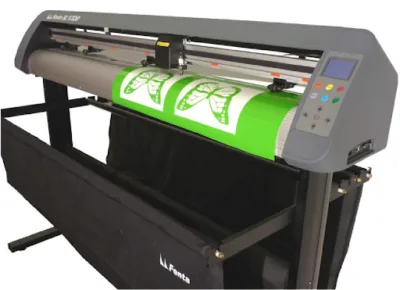
Fenta SL1300 Cutting Plotter
- Cuts Vinyl and Textile Foils (bought at SPH)
- Max cutting width 132 cm
- Max cutting length unlimited
Ask a Makerspace Instructor during a Support Hour for a 10 min introduction.
Manual: Cutting Plotter
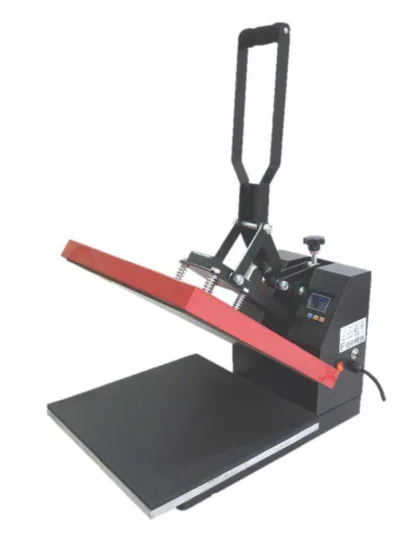
Textile Printing Press to transfer textile foil onto your fabric.
- Working Area 38x38 cm
Ask a Makerspace Instructor during a Support Hour for a 5 min introduction.
Manual: Printing Press
Hönggerberg:
0 of 1 availableZentrum:
0 of 1 available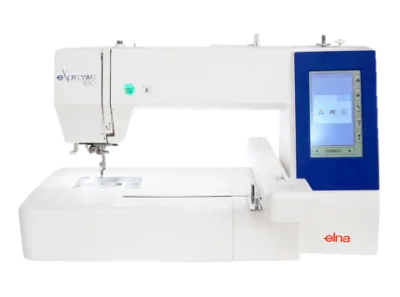
Elna Expressive 830
- Computer controlled
- Max embroidery area 200 x 200 mm
- Mono or Multichromatic designs
60 min introduction required! Book a slot here.
Manual: Embroidery Machine
Hönggerberg:
0 of 1 available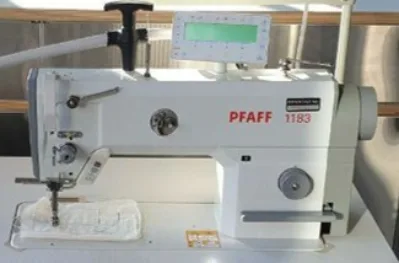
Hönggerberg: Pfaff 1183
Straight sticht only but through thick materials and very fast.
Ask a Makerspace Instructor during a Support Hour for a 10 min introduction.
Manual: Sewing Station
Hönggerberg:
0 of 1 availableZentrum:
0 of 1 available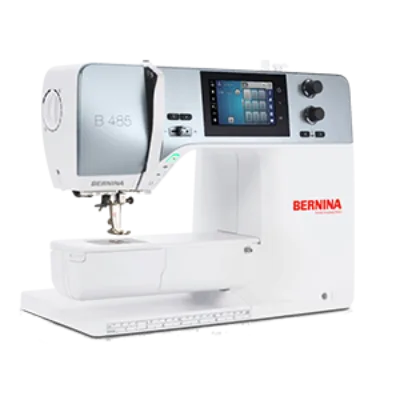
Bernina B485
Modern sewing machine with many different stitches.
Ask a Makerspace Instructor during a Support Hour for a 10 min introduction.
Manual: Bernina B485
Zentrum:
0 of 1 availableEinScan-SP
- Multi-functional 3D scanner
- Min scan volume: 30×30×30 mm
- Max scan volume: 700×700×700 mm
Ask a Makerspace Instructor during a Support Hour for a 30 min introduction required!
Manual: EinScan SP
Hönggerberg:
0 of 1 availableZentrum:
0 of 1 available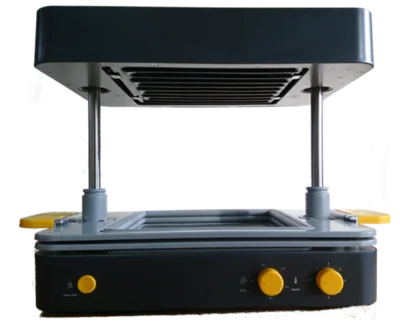
FormBox
- For prototyping, molds, packaging, ...
- Bed size 200 x 200 mm
- Material PETG and HIPS (bought at SPH)
Ask a Makerspace Instructor during a Support Hour for a 10 min introduction.
Manual: FormBox

Bernina Overlock Machine L460
- For finishing your sewing projects
- 3 stitches available (black and white colour thread)
Ask a Makerspace Instructor during a Support Hour for a 10 min introduction.
Manual: Overlock Machine
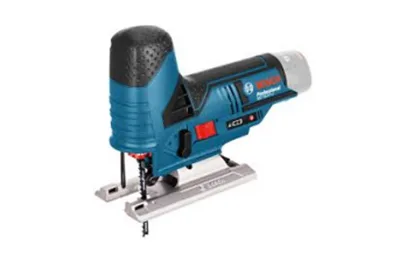
- Cordless screwdriver
- Power sander
- Jigsaw
- Dremel tool
- Drilling machine
- Small circular saw
- Multi Cutter
General Introduction is required to use the tools.
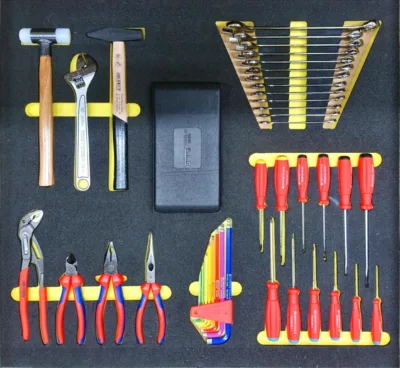
- Screwdrivers Wrenches
- Pliers
- Hammer
- Saws
- Sanding tools
- Measuring tools
- Cutting instruments
General Introduction is required to use the tools.

Did not find what you are looking for? We collaborate with other machine shops at ETH to give students access to more advanced equipment. If you are interested to use a lathe or a CNC-Drill for metal, please let us know a bit more about your needs and we can see how we can help you. Come by the Makerspace during our Support Hours to discuss it further.
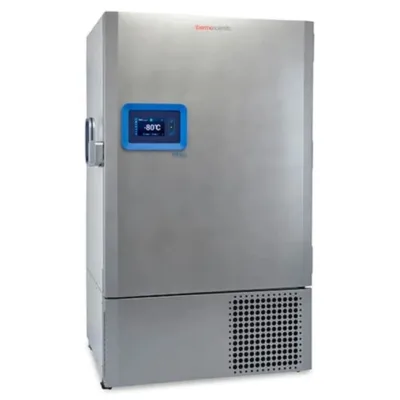
Description:
- The Institute of Molecular Systems Biology (IMSB) has granted us use of a shelf in one of the -80°C freezers within the institute’s freezer farm, located on the A-floor of the HPM building.
- Samples are stored in standard cardboard boxes and need clear labeling to indicate:
- Potential hazards.
- Owner identity.
Typical Uses:
- Properly frozen and stored at -80°C, bacteria, yeast cells, and mammalian cell lines can remain viable almost indefinitely.
- -80°C storage is also recommended for flash-frozen samples of purified proteins.
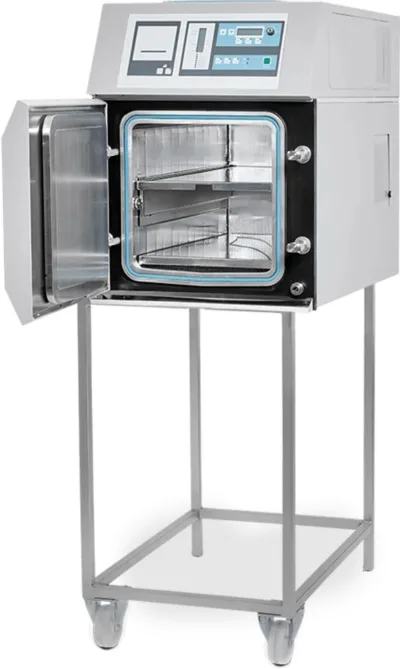
Description:
- Applying heat above 121°C for more than 20 minutes is a very effective sterilization method.
- Autoclaves use pressurized steam for sterilization, allowing efficient heat transfer and heating of water-based solutions beyond water’s boiling point.
- Note that pressurized steam and super-heated liquids can cause severe burns.
- A number of precautions are required to use an autoclave safely, and users must receive an introduction to safe use before operating it for the first time.
Typical Uses:
- Autoclaves are routinely used to sterilize both solid objects (e.g., glassware and plastic consumables) and aqueous solutions.
- This autoclave has specific features that make it especially effective for sterilizing large solution volumes and solids enclosed in bags.
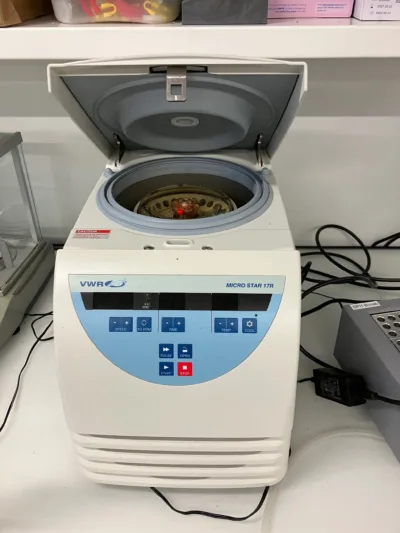
Description:
- The lab has a small centrifuge suitable for 1.5 ml “Eppendorf” tubes.
- Larger centrifuges, for sample volumes ranging from a few milliliters to liters, are available through the institute’s shared equipment pool.
Typical Uses:
- Centrifuges are used to separate solids (such as cells and aggregated macromolecules) that are finely dispersed in solutions or growth media from the surrounding liquids.
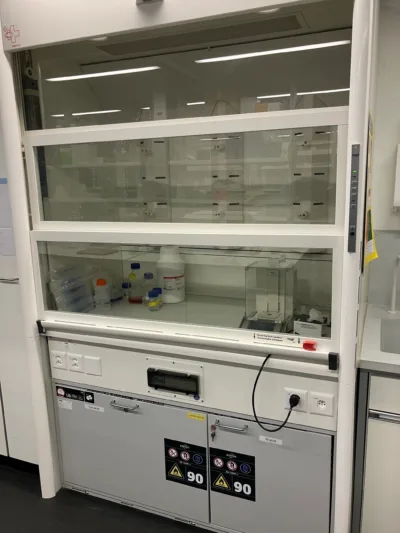
Description:
- A chemical fume hood maintains a constant, gentle airflow from the room into its interior.
- The air is then filtered and expelled outside the building.
- Ventilated cabinets below the hood provide safe storage for volatile and highly flammable liquids (e.g., organic solvents) and corrosive liquids (e.g., concentrated acids).
Typical Uses:
- Facilitates safe handling of chemicals that may release harmful fumes or dust.
- Commonly used when weighing dry chemical powders for solutions or pouring acrylamide gels for electrophoresis

Gel electrophoresis is a technique used to separate and analyse biomacromolecules (such as DNA, RNA, and proteins) based on their size (and, in some cases, charge) within a porous gel matrix. Under an applied electric current in an aqueous solution, the negatively charged molecules migrate toward the positively charged electrode, where smaller fragments move faster and travel farther through the gel pores than larger ones. This allows for approximate sizing and identification of the molecules or fragments by comparison against a size standard or ladder.
Gel electrophoresis is widely used for applications such as verifying the presence or size of DNA fragments (e.g. colony PCR, restriction enzyme digests), isolating individual fragments from preparative gels, and analysing proteins (e.g. SDS‑PAGE).
Gels / samples are usually mixed with a visualising agent (e.g. DNA-intercalating agents such as GelRed dye). The gel imager (AlphaImager) allows for said visualisation of the gel using UV light, which causes various dyes to fluoresce. Images can be saved digitally.
Requires LSL staff instruction for first time use.

Description:
- The Zeiss AxioVert 35 is a high-quality, older model inverted microscope, designed with the objective below the sample stage to view samples from the bottom.
- It has four objectives with magnifications of 2.5x, 10x, 20x, and 32x.
- The microscope supports bright-field, phase-contrast, and GFP fluorescence modes (GFP fluorescence available only at 20x and 32x).
- An introduction is required before first-time use.
Typical Uses:
- In inverted microscopes, light passes from a light source positioned above the sample, through the sample, and into the objective below.
- This design works best with samples that are thin and transparent.
- Common applications include observing cells grown on the bottoms of cell-culture flasks and examining thin samples on microscope slides.

A laminar flow hood is a partially enclosed workbench which allows for work in a sterile environment. Air is drawn through a HEPA filter and is circulated in a unidirectional flow across the work surface, creating a separate environment which prevents the contamination of samples through airborne particles.
Please note that the current setup does not allow for the sterility required for sensitive tissue cultures (mammalian or plant cell cultures).
Usage instruction included in general lab introduction.

Description:
- Liquid chromatography systems, such as the Äkta Xpress, integrate valves, pumps, detectors, and fraction collectors with a computer control system to enable automation of liquid chromatography experiments.
- These systems can be equipped with a variety of chromatography columns to separate molecules based on a range of physical and chemical properties (e.g., size, charge, ligand affinity).
Typical Uses:
- In biochemistry and molecular biology, liquid chromatography is commonly used to isolate specific biological macromolecules, especially proteins, from complex cellular samples.
- It enables the study of the properties and biochemical activity of these macromolecules in isolation from other surrounding molecules within a cell.

Liquid nitrogen (with a temperature of circa -196°C) is used for the immediate freezing of samples (“snap freezing”), which is useful for cryopreservation purposes – samples/cells are less likely to be destroyed or killed via this immediacy compared to slower cooling processes.
Handling liquid nitrogen is dangerous and requires additional safety precautions to be met (use of a suitable container, full coverage of the user’s body and wearing an additional face visor and insulated gloves).
Requires LSL staff instruction and supervision for first time use.
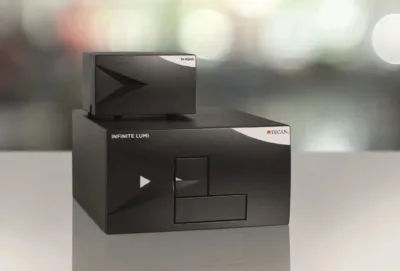
Description:
- This plate reader is fully equipped for absorbance, fluorescence, and luminescence measurements of samples, capable of handling both cuvettes and multiwell plates.
- It features monochromator-based optics, allowing freely selectable wavelengths over the UV-to-NIR range.
- Equipped with an injector, thermal regulation, and agitator hardware, it can handle complex measurement protocols.
- Computer control enables the instrument to run complex mixing and measurement sequences.
Good to Know:
- Plate readers like this one are used to automate optical measurements on liquid samples.
- Typical applications include checking cell growth, measuring enzymatic activity, and determining the concentration of specific chemicals in samples.
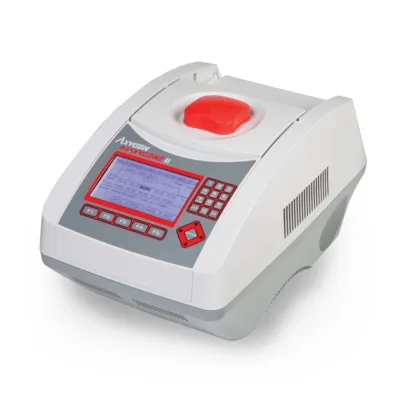
Description:
- PCR machines perform precise heating and cooling cycles required for the Polymerase Chain Reaction (PCR).
- This reaction enables the selective and exponential amplification (copying) of specific DNA sequences, even in the presence of various other DNA sequences
Typical Uses:
- PCR is used extensively in molecular biology and genetic engineering experiments.
- Common applications include detecting specific DNA sequences in a sample (e.g., checking for genetic modifications in organisms or identifying specific microorganisms).
- PCR is also used to generate DNA samples for transfer into other organisms.

A pH electrode is used to measure the pH (acidity or alkalinity) of a given sample or media via hydrogen ions (H+), allowing for the manual adjustment using acids or bases (usually solutions of HCl or NaOH).
Calibration of the pH meter using standard solutions at different pH levels (e.g. pH 7.0, 4.0 and 10.0) is required and recommended before every use.
Requires LSL staff instruction for first time use.
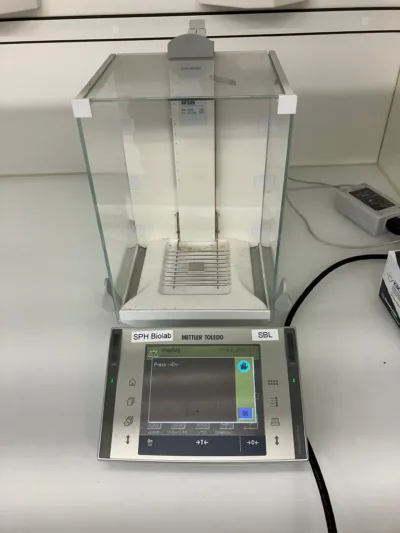
Description:
- This is a high-precision balance for weighing moderate quantities (up to 200 grams) of samples with extremely high precision (± 0.01 mg).
- Other balances are available for larger quantities.
Typical Uses:
- The balance is typically used to weigh small quantities of dry chemicals for preparing solutions.
- Another use is measuring biomass from liquid cultures, where cells are captured through filtration, and the filters are then dried and weighed.
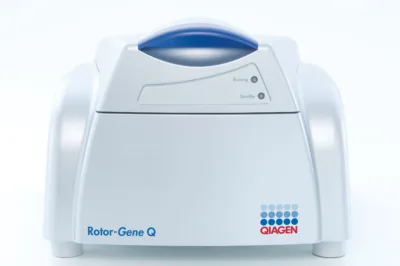
Description:
- Real-time PCR machines can perform the heating and cooling cycles that enable exponential DNA copying via Polymerase Chain Reactions (PCR).
- Unlike traditional PCR, in real-time PCR, the main interest lies in tracking the rate of the exponential DNA copying reaction, rather than the PCR products themselves.
- These machines are equipped with a multi-channel fluorescence detection system that measures the concentration of fluorescent molecules, which are released each time a DNA molecule is copied.
Typical Uses:
- Real-time PCR machines are employed in a wide range of experiments, with the two most popular uses being:
- Determining an individual’s genotype at a specific location in their genome.
- Measuring the concentration of a specific DNA or RNA sequence in a sample.

Description:
The lab houses two large-capacity shaking incubators, which can be temperature-adjusted from room temperature to 80°C and orbital shaking from 20 to 400 rpm (rotations per minute). They can hold different flask sizes, with fixtures to accommodate flask volumes between 50 mL to 5L, alongside racks for cell culture tubes.
Typical uses:
- The incubators are primarily used to grow aerobic bacteria and other microorganisms dispersed in liquid media at their optimal growth temperatures.
- Using dilute starter solutions or individual colonies from agar plates as inoculants allows for the dense growth of liquid cell cultures.
- By measuring the optical density of a sample (OD600), one can determine the number of cells present in the sample.
- Liquid cultures are e.g. used for the production and amplification of desired DNA plasmids or protein expression.
- Liquid cultures are useful for the long-term storage of an individual strain. This is done by cryopreservation, using glycerol as a cryoprotectant for storage at -80°C (hence the name “glycerol stocks”).
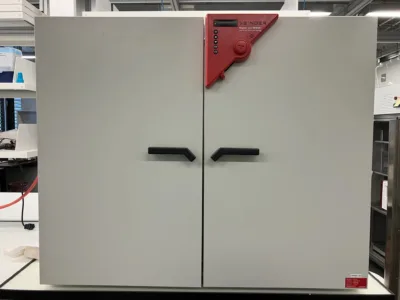
Description:
- The lab houses two large-capacity incubators that can be temperature-adjusted from room temperature to 100°C.
Typical Uses:
- The incubators are primarily used to grow bacteria and other microorganisms on agar plates at their optimal growth temperatures.
- Using dilute starter solutions allows individual cells to spread out on the agar plate, where each cell grows into a small colony visible to the naked eye.
- By counting the number of colonies, one can determine the number of individual cells initially present in the sample.

The Olympus SZ51 is a type of optical microscope which allows for the three-dimensional view of a specimen (rather than the 2D-view in compound light microscopes, which typically require sample preparation on glass slides).
Also known as a dissecting microscope, stereo microscopes aid in the study of larger multicellular organisms (e.g. plants, insects), and can be used for precise tissue dissection in these fields.
It has a set of 10x eyepieces, allowing for a magnification range of 8x to 40x, with moveable LED light sources.
Usage instruction included in General Lab Introduction.
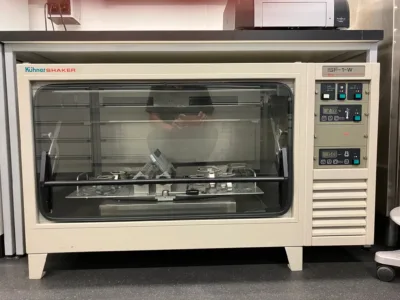
Description:
- This is a large-capacity shaker specifically for shaking liquid cultures of microorganisms.
- The shaking platform can be outfitted with various clamps to hold flasks and sample tubes, ranging in size from a few milliliters to several liters.
- Both temperature and shaking speed can be adjusted over a wide range to support various growth conditions.
Typical Uses:
- This shaker is used to grow either large numbers or large volumes of liquid cultures containing microorganisms, such as bacteria (e.g., E. coli), yeast, or mycelium.


The water bath and heat plate are used for the uniform heating of small samples (usually in 1.5-2 mL Eppendorf tubes) up to 100°C. They are used in standard molecular biology practices such as the genetic transformation of cells using the heat shock method, to maintain the correct temperature conditions for the enzymatic digestion of samples, or for the thermal denaturation of proteins.
Usage instruction included in general lab introduction.
Zentrum:
0 of 1 available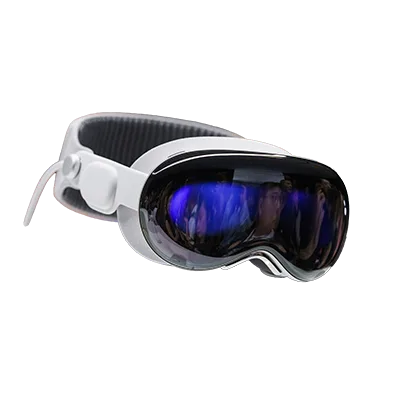
You can try the Apple Vision Pro during our Opening Hours, directly in the space.
Get Access
- Required: Makerspace General Introduction
- Approach the Welcome Desk during opening hours and ask for the glasses.
Zentrum:
1 of 6 available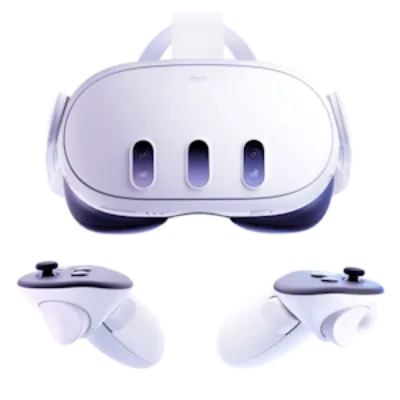
You can lend the Quest 3 for a week and test out everything at home.
Get access
- Required: Makerspace General Introduction
- Approach the Welcome Desk during opening hours and ask for the glasses.
Zentrum:
1 of 2 available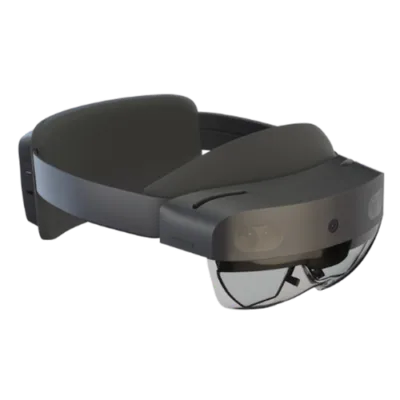
Augmented Reality device. Example project: Rimon
Get Access
- Required: Makerspace General Introduction
- Approach the Welcome Desk during opening hours and ask for the glasses.
ID INFRA Multimedia Technologies (MMT) operates a loan service for A/V equipment at the ETH Zentrum and ETH Hönggerberg locations. They primarily offer mobile devices for audio and video playback, such as projectors, screens, microphones, or audio recording devices.
Shop für Multimedia-Ausleihgeräte Zentrum

Shop für Multimedia-Ausleihgeräte Hönggerberg
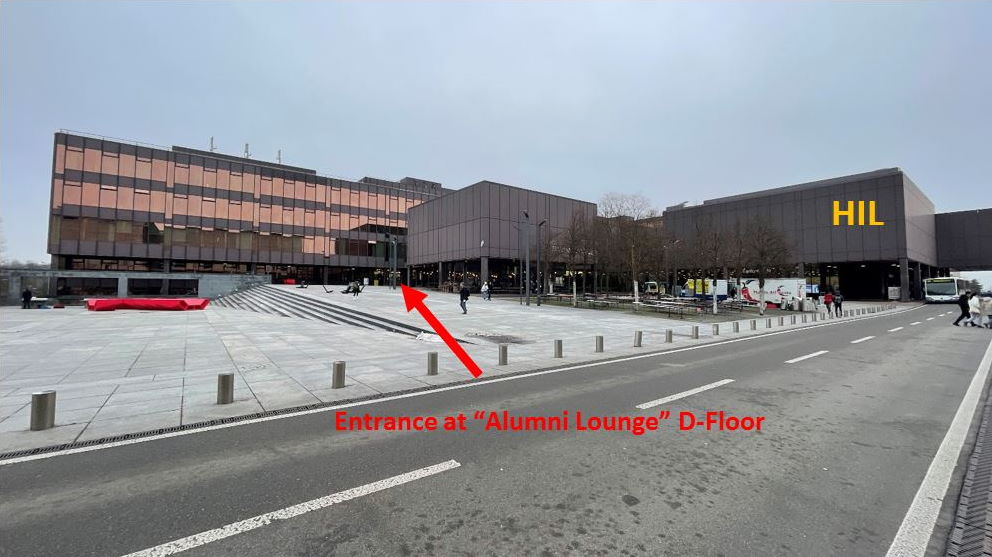
Zentrum:
1 of 1 available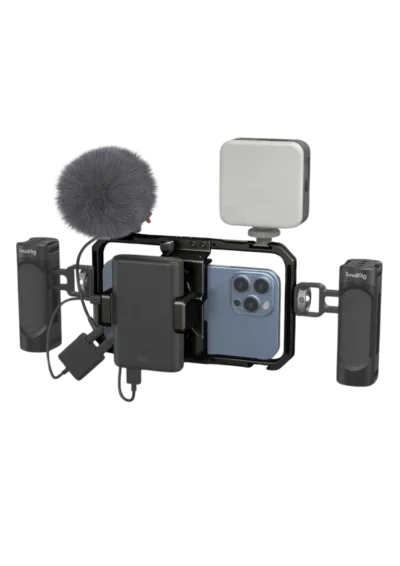
Video Equipment to enhance your video production setup:
- iPhone 13 Pro for Recording
- 2x microphones and a receiver.
- Camera Rig
- LED
- Powerbank Holder
Get access
- Required: Makerspace General Introduction
- Approach the Welcome Desk during opening hours and ask for the glasses.
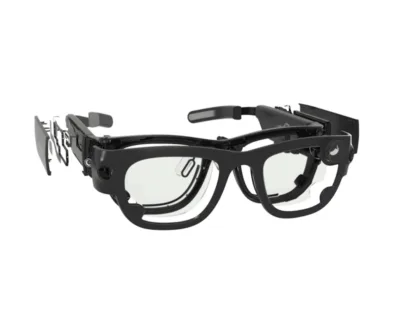
No AR, but it let's you capture live video from the user's perspective. This can be used for context aware applications.
Note: This is a collaboration with ETH AI Center
Get access
- Please contact us, since we lend these devices on a one-by-one basis (you will also need to sign a Meta agreement eventually): digital@sph.ethz.ch
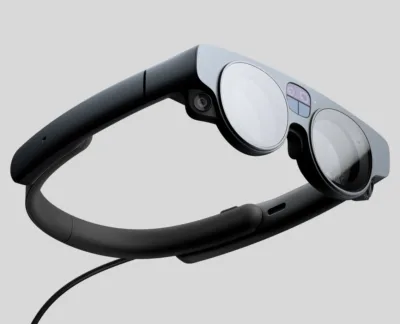
AR glasses. More info here: Magic Leap
Note: This is a collaboration with ETH AI Center
Get access
- Please contact us, since we lend these devices on a one-by-one basis: digital@sph.ethz.ch
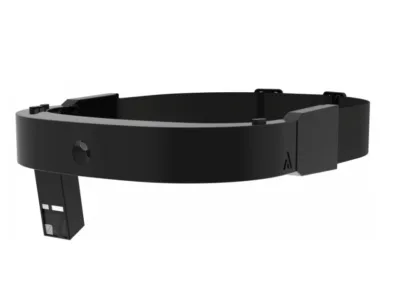
Lightweight AR glasses. More info: almer.com
Note: This is a collaboration with ETH AI Center
Get access
- Please contact us, since we lend these devices on a one-by-one basis: digital@sph.ethz.ch
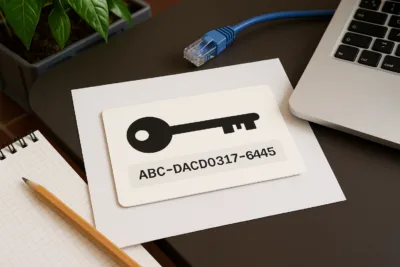
Access large language models (LLMs) for free. With the LiteLLM proxy, you can access models from OpenAI, Anthropic, Google, and others, with the same key and endpoint.
The key is designed to be used for personal use only.
Current limit: $30/month, 1 parallel request, 20 requests per minute. Limits may change in the future, depending on usage and budget.
Currently, we have these models:
- OpenAI, all models:
openai/*
- Anthropic (some):
anthropic/claude-sonnet-3-7anthropic/claude-sonnet-4-5
- Gemini, all models:
gemini/*
- Azure AI (some):
azure_ai/
- Our own server:
llava:13b,mistral-nemo:12b,llama3.1:8b
For all information, checkout our documentation: Documentation LLM API Keys
Get access
- You need to have an ethz.ch email address to request the API key.
- You can request the API key via this form.
All further instruction will be communicated via email.

